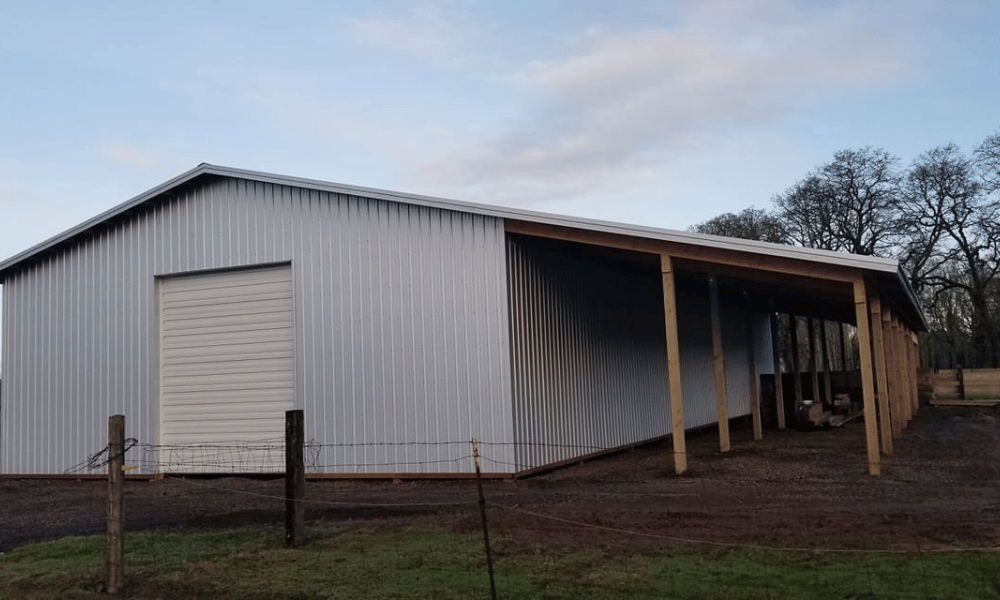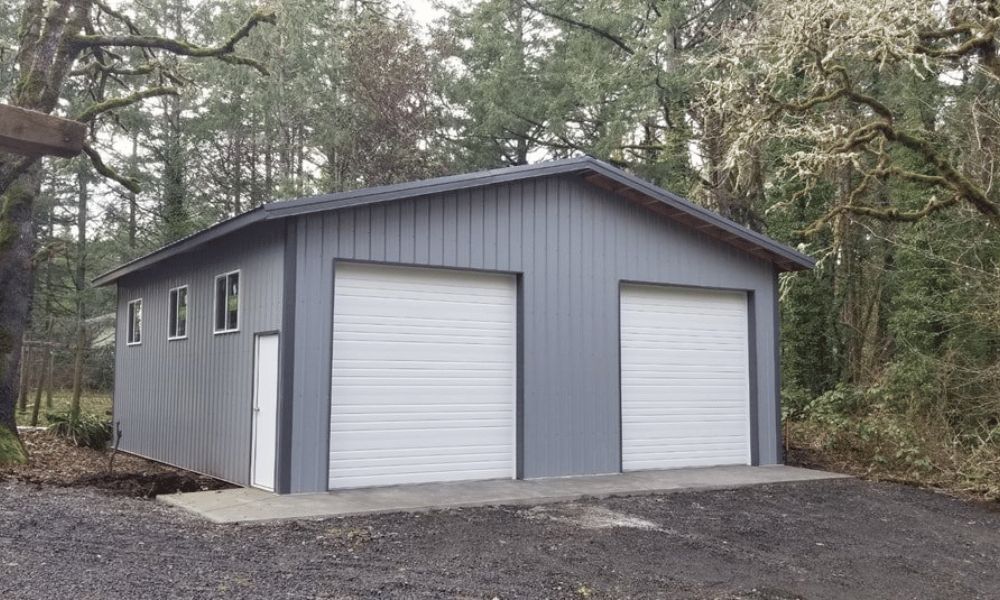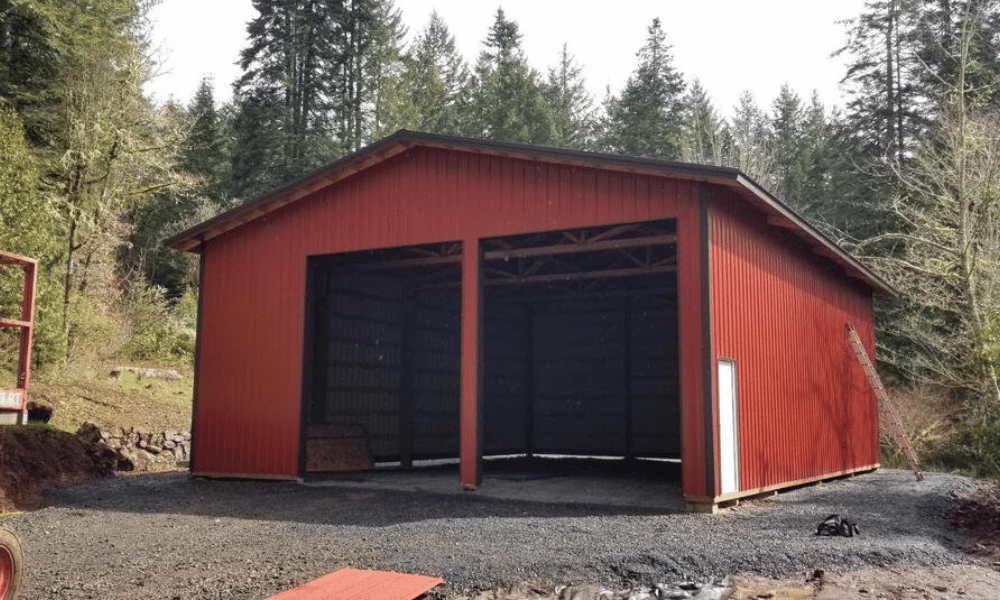Creating a seamless transition between indoor and outdoor living spaces is a modern-day challenge that many homeowners face. The quest for open, airy environments where one can enjoy nature while still being protected from the elements has led to innovative architectural designs. In this article, we will delve into the nuances of achieving that balance through the construction of a new structure, specifically focusing on the use of pole barns as an effective solution.

Understanding the Concept of Indoor and Outdoor Living
Why Indoor-Outdoor Balance Matters
The importance of balancing indoor and outdoor living cannot be overstated. It enhances our quality of life, improves mental well-being, and encourages a more active lifestyle. Natural sunlight, fresh air, and beautiful landscapes contribute significantly to our happiness.

The Role of Design in Creating Balance
Design plays a pivotal role in achieving harmony between the indoors and outdoors. A well-thought-out layout can blur the lines between these two realms. Large windows, sliding doors, and open floor plans are just some elements that facilitate this connection.
Pole Barns: An Innovative Solution
What is a Pole Barn?
A pole barn is a type of post-frame building that uses large poles or posts as structural supports. These structures are versatile and can serve various purposes—from storage to residential living spaces.
Benefits of Using Pole Barns for Indoor-Outdoor Balance
Pole barns offer unique advantages in creating balance between indoor and outdoor living:
Cost-Effectiveness: They are typically less expensive to construct than traditional buildings. Flexibility: The design can easily be customized to meet specific needs. Durability: Built to withstand harsh weather conditions, pole barns provide lasting structures.How To Create Balance Between Indoor And Outdoor Living With A New Structure!
Creating balance between indoor and outdoor living with a new pole barn structure involves thoughtful planning and execution. Here are several key components to consider:
Maximize Natural Light- Use large windows or glass doors to bring light into your space. Skylights can also enhance illumination while connecting you with the sky above.
- Open up areas for easy movement between your indoor and outdoor areas. Consider using patio spaces or decks adjacent to your pole barn.
- Select materials that match both your home’s interior and the natural surroundings outside. Wood finishes can create warmth while harmonizing with nature.
- Use landscaping elements such as gardens or water features right next to your structure. Arrange seating areas facing beautiful views to encourage outdoor relaxation.
- Ensure your design accommodates all seasons by including features like awnings or retractable screens. This flexibility allows you to enjoy both indoor comforts and outdoor beauty year-round.
Key Elements in Blending Spaces
Color Schemes That Connect Indoors and Outdoors
Using cohesive color palettes enhances continuity between spaces:
- Earthy tones like greens, browns, or blues reflect nature. Bright accents can mimic flowers or foliage outdoors.
Furniture Selection for Versatility
Choosing furniture that suits both settings is essential:
- Opt for materials resistant to weather yet comfortable indoors. Consider movable pieces that allow you to adapt spaces easily.
Landscaping Strategies Around Your New Structure
Creating Inviting Pathways
Pathways lead guests naturally from one area to another:
Use stone or gravel paths lined with native plants. Create curves instead of straight lines for an inviting look.Incorporating Plants Wisely
Plants soften hard surfaces while providing aesthetic benefits:
- Choose low-maintenance plants that thrive in your climate zone. Vertical gardens can also extend green space without taking up ground area.
Utilizing Outdoor Structures Effectively
Patios: The Bridge Between Indoors and Outdoors
Patios serve as transitional zones where one can entertain guests or unwind:
- Furnish with comfortable seating arrangements. Add lighting options like string lights or lanterns for ambiance at night.
Pergolas: Adding Character While Providing Shade
A pergola offers partial shelter while enhancing visual appeal:
- Train climbing plants over them for added greenery. Use them as an outdoor dining area during summer months.
Architectural Features That Enhance Connectivity
Open Floor Plans: Breaking Down Barriers
An open floor plan encourages interaction across spaces:
- Keep walls minimal; instead opt for free-flowing designs that connect rooms directly to outdoor areas.
Large Sliding Doors: The Gateway Between Two Worlds
Sliding doors function as both entrance and visual connection points:
- When opened fully, they create an uninterrupted flow from inside to outside.
Smart Technology in Blending Spaces Together
Automated Systems: Control at Your Fingertips
Implementing smart technology allows you to manage comfort levels easily:
Smart thermostats maintain energy efficiency whether you're inside or out. Automated blinds or shades adjust based on sunlight exposure throughout the day.Lighting Solutions That Adapt Accordingly
Incorporate adaptable lighting systems that change according to time/daylight conditions:
- LED lights can be controlled remotely, setting perfect moods effortlessly!
Choosing the Right Location For Your New Structure
Consideration of Sunlight Exposure
Select locations offering optimal sunlight throughout different times of day—this impacts energy usage significantly!
Proximity To Existing Structures
Positioning affects ease-of-access—place it near existing patios/decks for better integration into overall property layout!
Building Regulations That Influence Design Choices
Familiarize yourself with local building codes before undertaking any construction projects—they’ll dictate many aspects related directly towards feasibility & safety!
Working With Professionals To Achieve Desired Results
Collaborating closely with architects/designers ensures goals align perfectly while gaining expert insights regarding potential challenges ahead!
Maintenance Tips For Long-Term Enjoyment Of Your Space
Regular upkeep helps preserve aesthetics/functionality—plan seasonal inspections plus cleanings periodically!
FAQs About Creating Balance Between Indoor And Outdoor Living Spaces
What materials work best when constructing my new structure?
High-durability wood/metal options combined with energy-efficient glass yield excellent results!
How does landscaping affect my indoor-outdoor balance?
A well-designed landscape complements architectural features enhancing overall connectivity & aesthetic harmony!
Can I utilize smart technology effectively within my new structure?Absolutely! Integrating automated systems optimizes convenience/control across both environments seamlessly!
4. Is there any specific design style recommended for pole barns?
Rustic styles blend beautifully alongside natural surroundings—wood accents paired alongside metal roofs create striking contrasts inviting rustic charm!
5. Are there zoning laws I should consider before building?

Yes! Consult local regulations ensuring compliance ensuring peace-of-mind throughout construction process avoiding unexpected issues down line!
6. How often should I https://privatebin.net/?d8a27934576e7f3c#DNRrci37pdRdcMY2p8JftyWCX3SyHTd7oBiDBgEXSbci maintain my new structure?
Conduct seasonal checks addressing wear/tear maintaining aesthetics preserving functionality long-term ensuring enjoyment continues uninterrupted!
Conclusion: Embracing Synergy Between Two Worlds!
Striking balance between indoor/outdoor living isn’t just about physical presence—it encompasses emotional connections forged through thoughtfully designed spaces encouraging exploration & relaxation alike! By leveraging innovative solutions like pole barns combined creative strategies mentioned here today—you’ll unlock endless possibilities transforming experiences forevermore enriching lives lived harmoniously amidst nature surrounding us all!